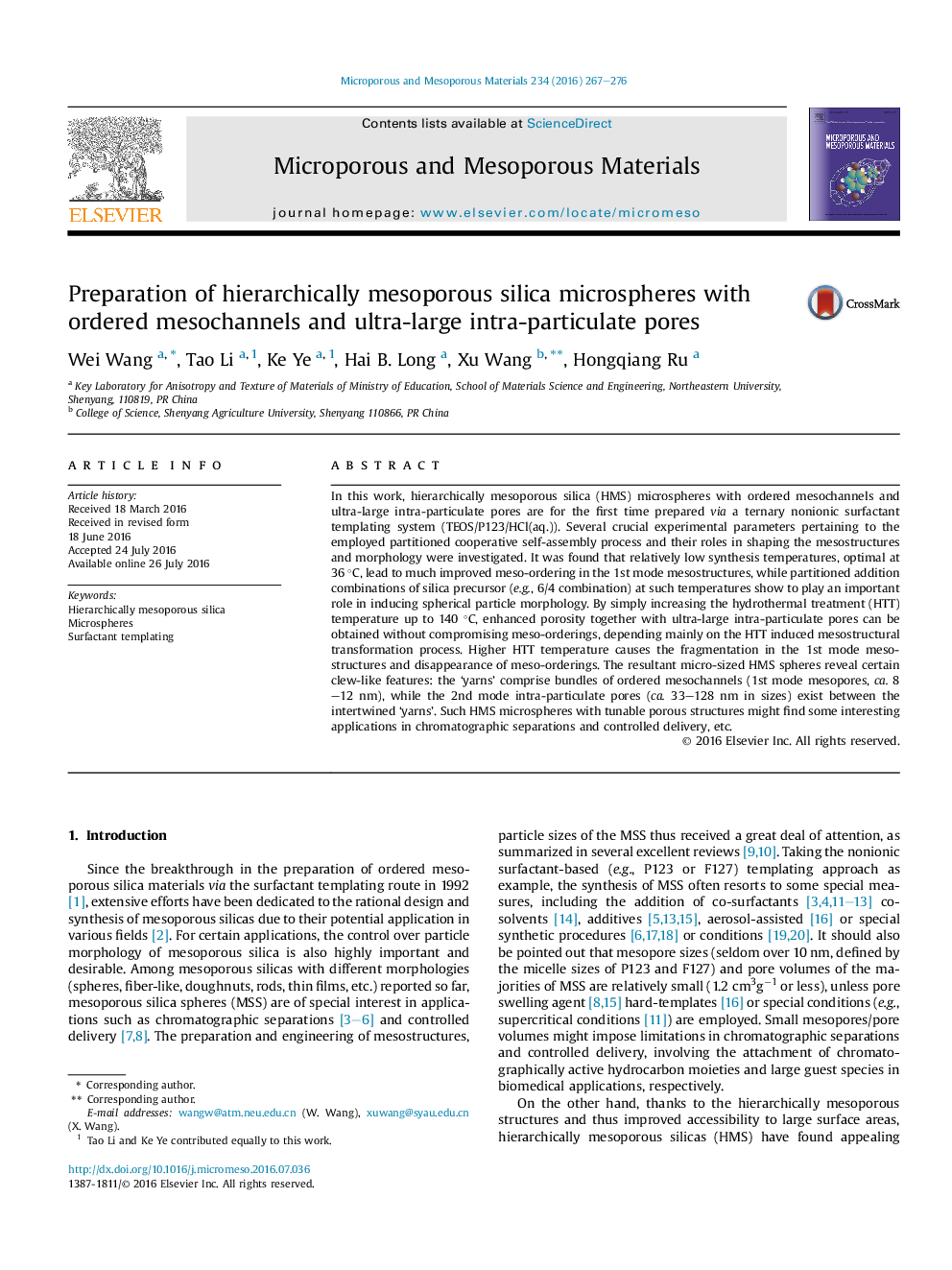| کد مقاله | کد نشریه | سال انتشار | مقاله انگلیسی | نسخه تمام متن |
|---|---|---|---|---|
| 71937 | 49003 | 2016 | 10 صفحه PDF | دانلود رایگان |

• Ternary templating system via partitioned cooperative self-assembly process used.
• Unique hierarchically mesoporous silica (HMS) microspheres obtained.
• Ordered mesochannels & tunable ultra-large intra-particulate pores.
In this work, hierarchically mesoporous silica (HMS) microspheres with ordered mesochannels and ultra-large intra-particulate pores are for the first time prepared via a ternary nonionic surfactant templating system (TEOS/P123/HCl(aq.)). Several crucial experimental parameters pertaining to the employed partitioned cooperative self-assembly process and their roles in shaping the mesostructures and morphology were investigated. It was found that relatively low synthesis temperatures, optimal at 36 °C, lead to much improved meso-ordering in the 1st mode mesostructures, while partitioned addition combinations of silica precursor (e.g., 6/4 combination) at such temperatures show to play an important role in inducing spherical particle morphology. By simply increasing the hydrothermal treatment (HTT) temperature up to 140 °C, enhanced porosity together with ultra-large intra-particulate pores can be obtained without compromising meso-orderings, depending mainly on the HTT induced mesostructural transformation process. Higher HTT temperature causes the fragmentation in the 1st mode mesostructures and disappearance of meso-orderings. The resultant micro-sized HMS spheres reveal certain clew-like features: the ‘yarns’ comprise bundles of ordered mesochannels (1st mode mesopores, ca. 8–12 nm), while the 2nd mode intra-particulate pores (ca. 33–128 nm in sizes) exist between the intertwined ‘yarns’. Such HMS microspheres with tunable porous structures might find some interesting applications in chromatographic separations and controlled delivery, etc.
Figure optionsDownload as PowerPoint slide
Journal: Microporous and Mesoporous Materials - Volume 234, 1 November 2016, Pages 267–276